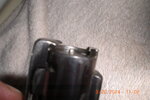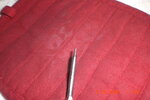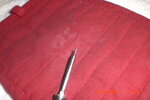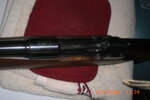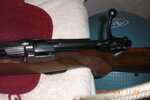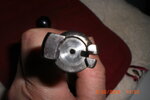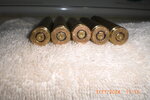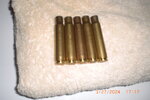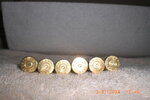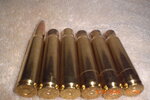yep, I was so focused on the primers that I failed to notice the rings showing until after posting those pics.
If you have a cartridge case headspace gauge you can measure a fired case and see if the shoulder moved a god awful distance. Such as what I did for my 30-30 cases.
Marlin New Haven reamed the chamber large, no doubt so their customers, who never cleaned their rifles, would not have difficultly chambering and extracting rounds.
A practice I have been doing, particularly with the belted magnums I own, is lubricating the cases on the first firing. The base to shoulder distance is not controlled in a belted magnum, and if the front of the case sticks to the chamber, the sidewalls are going to have to stretch to let the base touch the bolt face once the round is fired. And that is how you get case head separations. Now If I lubricate the case, on combustion it slides to the bolt face, and then as pressure builds, the shoulder folds out to fill the space available. The end result is a stress free, perfectly fire formed case. Then I use my case gauges, and only bump the shoulder back 0.003" when I size.
I recommend leaving sizing lube on, or if you are applying at the range, use a human compatible grease. Any grease will work, for that matter, I have shot tens of thousands of cases coated with Johnson paste wax. The wax melts under the temperatures and pressures of combustion and forms a lubricant layer. Just like the cartridges used in the Pedersen rifle. That rifle was a high pressure delayed blowback and needed case lubrication to function.
By the way, the Germans in WW1 and WW2 were coating their steel case 8 MM in wax, so the stuff would not stick in the chamber.
I have been using vasoline, or hair gels at the range. Hair gel is vasoline with a pleasing perfume. Neither will turn me into a dead bug if ingested.
A dip and twist is all you need:
These are 300 H&H cases, god awful expensive, too expensive to ruin on first firing.
Shoots good.
Your flattened primers could be signs of over pressure, but since you were firing SB commercial ammunition, I really doubt that. I am confident that what I am seeing is evidence of a big gap between the base of your cartridge, and the bolt face. On combustion, the primer back outs to the bolt face. Given that the front of your case is adhering to the front of the chamber, the case stays fixed until the pressures inside the case are sufficiently high to stretch the sidewalls. That is when the case head moves to the bolt face, stuffing the primer back in the pocket. In the duration, that primer is swelling like a muffin, and once stuffed back in the primer pocket, the primer appears flattened. It is a false indication of excessive pressure.
That is one reason I do load development with greased cases, bolt gun or gas gun. I want to see the transition from rounded to flattened primer based on internal pressure alone. Usually when I see a flattened primer on a lubricated case, I am well above maximum. Always had to reduce loads, by grains, from the transition point.
Also, the primer rings around the firing pin, may or may not be due to excessive pressure. A large gap between firing pin and firing pin hole will allow the primer to flow into the hole. However you are firing old surplus ammunition, stuff that was weeded out of military inventory because it had gotten too dangerous to issue, or to store. It is worth being cautious when you see primer cupping with old ammunition. As gunpowder deteriorates, it raises pressures in the case.
Temperatures exponentially accelerate the aging of nitrocellulose gunpowder:
and pressures increase in old gunpowder.
This TMO presentation is on DTIC.
